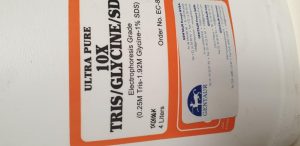We current a protocol for integrating two forms of organic knowledge – medical and molecular – for more practical classification of sufferers with most cancers. The proposed method is a hybrid between early and late knowledge integration technique. On this hybrid protocol, the set of informative medical options is prolonged by the classification outcomes based mostly on molecular knowledge units.
The outcomes are then handled as new artificial variables. The hybrid protocol was utilized to METABRIC breast most cancers samples and TCGA urothelial bladder carcinoma samples. Varied knowledge sorts have been used for medical endpoint prediction: medical knowledge, gene expression, somatic copy quantity aberrations, RNA-Seq, methylation, and reverse part protein array. The efficiency of the hybrid knowledge integration was evaluated with a repeated cross validation process and in contrast with different strategies of knowledge integration: early integration and late integration by way of tremendous studying.
The hybrid methodology gave related outcomes to these obtained by the most effective of the examined variants of tremendous studying. What’s extra, the hybrid methodology allowed for additional sensitivity evaluation and recursive function elimination, which led to compact predictive fashions for most cancers medical endpoints. For breast most cancers, the ultimate mannequin consists of eight medical variables and two artificial options obtained from molecular knowledge.
For urothelial bladder carcinoma, solely two medical options and one artificial variable have been crucial to construct the most effective predictive mannequin. We now have proven that the inclusion of the artificial variables based mostly on the RNA expression ranges and replica quantity alterations can result in improved high quality of prognostic checks. Thus, it ought to be thought-about for inclusion in wider medical follow.
A Micro organism-Impressed Morphology Genetic Biomedical Materials: Self-Propelled Synthetic Microbots for Metastatic Triple Unfavourable Breast Most cancers Therapy
Morphology genetic biomedical supplies (MGBMs), referring to fabricating supplies by studying from the genetic morphologies and techniques of pure species, maintain nice potential for biomedical functions. Impressed by the cargo-carrying-bacterial remedy (microbots) for most cancers remedy, a MGBM (synthetic microbots, AMBs) was constructed.
Somewhat than the inherent bacterial properties (cancerous chemotaxis, tumor invasion, cytotoxicity), AMBs additionally possessed ingenious nitric oxide (NO) technology technique. Mimicking the bacterial development, the hyaluronic acid (HA) polysaccharide was induced as a coating capsule of AMBs to realize lengthy circulation in blood and particular tissue choice (tumor tropism).
Coated beneath the capsule-like polysaccharide was the combinatorial agent, the self-assembly constructed by the amphiphilic dendrons with ample l-arginine residues peripherally (as endogenous NO donor) and hydrophobic chemotherapeutic medicine on the core stacking on the floor of SWNTs (the photothermal agent) for a strong chemo-photothermal remedy (chemo-PTT) and the elicited immune remedy.
Subsequently, the basic inducible nitric oxide synthase (iNOS) pathway aroused by immune response was revolutionarily utilized to oxidize the l-arginine substrates for NO manufacturing, the method for which may be promoted by the excessive reactive oxygen species degree generated by chemo-PTT.
The NO generated by AMBs was supposed to control vasodilation and trigger a dramatic invasion (because the microbots) to disperse the therapeutic brokers all through the stable tumor for a way more enhanced healing impact, which we outlined as “self-propulsion”. The self-propelled AMBs exhibiting spectacular main tumor ablation, in addition to the distant metastasis regression to beat the metastatic triple detrimental breast most cancers, supplied pioneering potential therapeutic alternatives, and enlightened broad prospects in biomedical utility
Aidi injection, a standard Chinese language biomedical preparation, for gynecologic tumors: A scientific assessment and PRISMA-compliant meta-analysis
Aidi injection (ADI), a standard Chinese language biomedical preparation, is a promising adjuvant remedy for gynecologic tumors (GTs), together with cervical most cancers (CC), endometrial most cancers (EC), and ovarian most cancers (OC). Though research have reported positively on ADI remedy, its precise results and security in GT sufferers stay controversial. Due to this fact, a wide-ranging systematic search of digital databases was carried out for this meta-analysis. Information from 38 trials together with 3,309 GT sufferers have been analyzed.
The outcomes indicated that the mixture of typical remedy and ADI markedly improved the sufferers’ general response fee (P < 0.00001), illness management fee (P < 0.00001), and high quality of life (P < 0.05) in contrast with typical remedy alone. Moreover, affected person immunity was enhanced with mixed remedy, as indicated by considerably elevated percentages of CD3+ (P = 0.005) and CD4+ (P < 0.00001) and elevated CD4+/CD8+ ratio (P = 0.001).
A lot of the antagonistic occasions attributable to radiochemotherapy reminiscent of gastrointestinal points, leukopenia, thrombocytopenia, and hepatotoxicity, (P < 0.05 for all) have been considerably alleviated when ADI was used within the GT sufferers. Nevertheless, different antagonistic occasions reminiscent of nephrotoxicity, diarrhea, alopecia, and neurotoxicity didn’t considerably differ between the 2 teams. Total, these outcomes recommend that the mixture of typical and ADI remedy is more practical than typical remedy alone.
On the design, features, and biomedical functions of high-throughput dielectrophoretic micro-/nanoplatforms: a assessment
As an environment friendly, speedy and label-free micro-/nanoparticle separation method, dielectrophoresis (DEP) has attracted widespread consideration lately, particularly within the subject of biomedicine, which displays big potential in biomedically related functions reminiscent of illness prognosis, most cancers cell screening, biosensing, and others.
DEP expertise has been enormously developed just lately from the low-flux laboratory degree to high-throughput sensible functions. On this assessment, we summarize the latest progress of DEP expertise in biomedical functions, together with firstly the design of assorted sorts and supplies of DEP electrode and movement channel, design of enter alerts, and different improved designs.
Then, useful tailoring of DEP programs with endowed particular features together with separation, purification, seize, enrichment and connection of biosamples, in addition to the combination of multifunctions, are demonstrated. After that, consultant DEP biomedical utility examples in facets of illness detection, drug synthesis and screening, biosensing and cell positioning are offered.
 Cellufine MAX Q-r |
|
20-502 |
JNC America |
5 lt |
Ask for price |
 Cellufine MAX Q-r |
|
20-503 |
JNC America |
10 lt |
Ask for price |
 Cellufine MAX S-h |
|
20-402 |
JNC America |
5 lt |
Ask for price |
 Cellufine MAX S-h |
|
20-403 |
JNC America |
10 lt |
Ask for price |
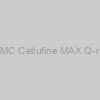 MC Cellufine MAX Q-r |
|
20-500-51 |
JNC America |
5 x 1 ml |
EUR 325.2 |
 MC Cellufine MAX Q-r |
|
20-500-55 |
JNC America |
5 x 5 ml |
EUR 631.2 |
 MC Cellufine MAX S-h |
|
20-400-51 |
JNC America |
5 x 1 ml |
EUR 325.2 |
 MC Cellufine MAX S-h |
|
20-400-55 |
JNC America |
5 x 5 ml |
EUR 631.2 |
 Cellufine MAX GS |
|
21-303 |
JNC America |
10 lt |
Ask for price |
 Cellufine MAX IB |
|
21-605 |
JNC America |
10 lt |
Ask for price |
 Cellufine MAX DEAE |
|
21-001 |
JNC America |
500 ml |
EUR 1756.8 |
 Cellufine MAX DEAE |
|
21-002 |
JNC America |
5 lt |
Ask for price |
 Cellufine MAX DEAE |
|
21-003 |
JNC America |
10 lt |
Ask for price |
 Cellufine MAX Butyl |
|
21-100 |
JNC America |
100 ml |
EUR 439.2 |
 Cellufine MAX Butyl |
|
21-102 |
JNC America |
5 lt |
Ask for price |
 Cellufine MAX Butyl |
|
21-103 |
JNC America |
10 lt |
Ask for price |
 Cellufine MAX Phenyl |
|
20700 |
JNC America |
100 ml |
EUR 439.2 |
 Cellufine MAX Phenyl |
|
20702 |
JNC America |
5 lt |
Ask for price |
 Cellufine MAX Phenyl |
|
20703 |
JNC America |
10 lt |
Ask for price |
 Cellufine MAX AminoButyl |
|
21-500 |
JNC America |
50 ml |
EUR 450 |
 Cellufine MAX AminoButyl |
|
21-501 |
JNC America |
100 ml |
EUR 746.4 |
 Cellufine MAX AminoButyl |
|
21-502 |
JNC America |
500 ml |
EUR 2959.2 |
 Cellufine MAX AminoButyl |
|
21-503 |
JNC America |
5 lt |
Ask for price |
 Cellufine MAX AminoButyl |
|
21-504 |
JNC America |
10 lt |
Ask for price |
 Cellufine MAX Q-h |
|
20-602 |
JNC America |
5 lt |
Ask for price |
 Cellufine MAX Q-h |
|
20-603 |
JNC America |
10 lt |
Ask for price |
 MC Cellufine MAX CM |
|
20-900 |
JNC America |
100 ml |
EUR 458.4 |
 MC Cellufine MAX CM |
|
20-900-51 |
JNC America |
5 x 1 ml |
EUR 325.2 |
 MC Cellufine MAX CM |
|
20-900-55 |
JNC America |
5 x 5 ml |
EUR 631.2 |
 MC Cellufine MAX CM |
|
20-901 |
JNC America |
500 ml |
EUR 1756.8 |
 MC Cellufine MAX CM |
|
20-902 |
JNC America |
5 lt |
Ask for price |
 MC Cellufine MAX CM |
|
20-903 |
JNC America |
10 lt |
Ask for price |
 MC Cellufine MAX GS |
|
21-300-51 |
JNC America |
5 x 1 ml |
EUR 325.2 |
 MC Cellufine MAX GS |
|
21-300-55 |
JNC America |
5 x 5 ml |
EUR 631.2 |
 MC Cellufine MAX IB |
|
21-600-15 |
JNC America |
1 x 5 ml |
EUR 362.4 |
 MC Cellufine MAX IB |
|
21-600-51 |
JNC America |
5 x 1 ml |
EUR 362.4 |
 MC Cellufine MAX DEAE |
|
21-000-51 |
JNC America |
5 x 1 ml |
EUR 325.2 |
 MC Cellufine MAX DEAE |
|
21-000-55 |
JNC America |
5 x 5 ml |
EUR 631.2 |
 MC Cellufine MAX Butyl |
|
21-100-51 |
JNC America |
5 x 1 ml |
EUR 325.2 |
 MC Cellufine MAX Butyl |
|
21-100-55 |
JNC America |
5 x 5 ml |
EUR 644.4 |
 MC Cellufine MAX Phenyl |
|
20-700-51 |
JNC America |
5 x 1 ml |
EUR 325.2 |
 MC Cellufine MAX Phenyl |
|
20-700-55 |
JNC America |
5 x 5 ml |
EUR 644.4 |
 Cellufine MAX Phenyl LS |
|
20800 |
JNC America |
100 ml |
EUR 439.2 |
 Cellufine MAX Phenyl LS |
|
20802 |
JNC America |
5 lt |
Ask for price |
 Cellufine MAX DexS-Hbp |
|
21-700 |
JNC America |
10 ml |
EUR 312 |
 Cellufine MAX DexS-Hbp |
|
21-700-15 |
JNC America |
1 x 5 ml |
EUR 362.4 |
 Cellufine MAX DexS-Hbp |
|
21-700-51 |
JNC America |
5 x 1 ml |
EUR 362.4 |
 Cellufine MAX DexS-Hbp |
|
21-701 |
JNC America |
50 ml |
EUR 580.8 |
 Cellufine MAX DexS-Hbp |
|
21-702 |
JNC America |
500 ml |
EUR 2882.4 |
 Cellufine MAX DexS-Hbp |
|
21-704 |
JNC America |
10 lt |
Ask for price |
 Cellufine MAX DexS-Vir |
|
21-800 |
JNC America |
10 ml |
EUR 312 |
 Cellufine MAX DexS-Vir |
|
21-801 |
JNC America |
50 ml |
EUR 580.8 |
 Cellufine MAX DexS-Vir |
|
21-802 |
JNC America |
500 ml |
EUR 2882.4 |
 Cellufine MAX DexS-Vir |
|
21-804 |
JNC America |
10 lt |
Ask for price |
 Cellufine MAX DexS-Hbp |
|
21703 |
JNC America |
5 lt |
Ask for price |
 Cellufine MAX DexS-Vir |
|
21803 |
JNC America |
5 lt |
Ask for price |
 MC Cellufine MAX AminoButyl |
|
21-500-15 |
JNC America |
1 x 5 ml |
EUR 541.2 |
 MC Cellufine MAX AminoButyl |
|
21-500-51 |
JNC America |
5 x 1 ml |
EUR 541.2 |
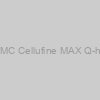 MC Cellufine MAX Q-h |
|
20-600-51 |
JNC America |
5 x 1 ml |
EUR 325.2 |
 MC Cellufine MAX Q-h |
|
20-600-55 |
JNC America |
5 x 5 ml |
EUR 631.2 |
 MC Cellufine MAX Phenyl LS |
|
20-800-51 |
JNC America |
5 x 1 ml |
EUR 325.2 |
 MC Cellufine MAX Phenyl LS |
|
20-800-55 |
JNC America |
5 x 5 ml |
EUR 644.4 |
 MC Cellufine MAX DexS-Vir |
|
21-800-15 |
JNC America |
1 x 5 ml |
EUR 362.4 |
 MC Cellufine MAX DexS-Vir |
|
21-800-51 |
JNC America |
5 x 1 ml |
EUR 362.4 |
 Cellufine ETclean S |
|
682-985-324 |
JNC America |
10 ml |
EUR 439.2 |
 Cellufine ETclean S |
|
682-985-326 |
JNC America |
50 ml |
EUR 708 |
 Cellufine ETclean S |
|
682-985-328 |
JNC America |
500 ml |
EUR 3624 |
 Cellufine ETclean S |
|
682-985-330 |
JNC America |
5 lt |
Ask for price |
 Cellufine ETclean S |
|
682-985-335 |
JNC America |
10 lt |
Ask for price |
 MC Cellufine S-500 |
|
21-200-51 |
JNC America |
5 x 1 ml |
EUR 286.8 |
 MC Cellufine S-500 |
|
21-200-55 |
JNC America |
5 x 5 ml |
EUR 504 |
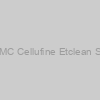 MC Cellufine Etclean S |
|
201-15 |
JNC America |
1 x 5 ml |
EUR 427.2 |
 MC Cellufine Etclean S |
|
201-51 |
JNC America |
5 x 1 ml |
EUR 427.2 |
 Cellufine PB |
|
683-986-326 |
JNC America |
50 ml |
Ask for price |
 Cellufine PB |
|
683-986-328 |
JNC America |
500 ml |
Ask for price |
 Cellufine PB |
|
683-986-330 |
JNC America |
5 lt |
Ask for price |
 Cellufine PB |
|
683-986-335 |
JNC America |
10 lt |
Ask for price |
 Cellufine Formyl |
|
676-944-324 |
JNC America |
10 ml |
EUR 388.8 |
 Cellufine Formyl |
|
676-944-335 |
JNC America |
10 lt |
Ask for price |
 Cellufine Sulfate |
|
676-943-324 |
JNC America |
10 ml |
EUR 362.4 |
 Cellufine Sulfate |
|
19849 |
JNC America |
10 lt |
Ask for price |
 Cellufine Phosphate |
|
684-987-335 |
JNC America |
10 lt |
Ask for price |
 Cellufine Phosphate |
|
685-987-330 |
JNC America |
5 lt |
Ask for price |
 Cellufine Phosphate |
|
19-546 |
JNC America |
500 ml |
EUR 4046.4 |
 Cellufine A-800 |
|
673980335 |
JNC America |
10 lt |
Ask for price |
 Cellufine A-500 |
|
675980335 |
JNC America |
10 lt |
Ask for price |
 Cellufine Q-500 |
|
675982335 |
JNC America |
10 lt |
Ask for price |
 Cellufine C-500 |
|
675983335 |
JNC America |
10 lt |
Ask for price |
 Cellufine A-200 |
|
676-980-327 |
JNC America |
100 ml |
EUR 388.8 |
 Cellufine A-200 |
|
676980335 |
JNC America |
10 lt |
Ask for price |
 Cellufine GH-25 |
|
670000335 |
JNC America |
10 lt |
Ask for price |
 Cellufine SPA-HC |
|
21-904 |
JNC America |
10 lt |
Ask for price |
 Cellufine ETclean L |
|
681-984-324 |
JNC America |
10 ml |
EUR 439.2 |
 Cellufine ETclean L |
|
681-984-326 |
JNC America |
50 ml |
EUR 708 |
 Cellufine ETclean L |
|
681-984-328 |
JNC America |
500 ml |
EUR 3624 |
 Cellufine ETclean L |
|
681-984-330 |
JNC America |
5 lt |
Ask for price |
 Cellufine ETclean L |
|
681-984-335 |
JNC America |
10 lt |
Ask for price |
 MC Cellufine Sulfate |
|
19-845-15 |
JNC America |
1 x 5 ml |
EUR 439.2 |
 MC Cellufine Sulfate |
|
19-845-51 |
JNC America |
5 x 1 ml |
EUR 439.2 |
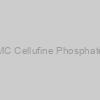 MC Cellufine Phosphate |
|
195-15 |
JNC America |
1 x 5 ml |
EUR 516 |
 MC Cellufine Phosphate |
|
195-51 |
JNC America |
5 x 1 ml |
EUR 516 |
 Cellufine GCL-2000HF |
|
21-400 |
JNC America |
100 ml |
EUR 362.4 |
 Cellufine GCL-2000HF |
|
21-401 |
JNC America |
500 ml |
EUR 542.4 |
 Cellufine GCL-2000HF |
|
21-402 |
JNC America |
5 lt |
Ask for price |
 Cellufine GCL-2000HF |
|
21-403 |
JNC America |
10 lt |
Ask for price |
 MC Cellufine A-200 |
|
19-611-51 |
JNC America |
5 x 1 ml |
EUR 260.4 |
 MC Cellufine GH-25 |
|
19-711-55 |
JNC America |
5 x 5 ml |
EUR 516 |
 MC Cellufine C-500 |
|
19-800-51 |
JNC America |
5 x 1 ml |
EUR 260.4 |
 MC Cellufine C-500 |
|
19-800-55 |
JNC America |
5 x 5 ml |
EUR 414 |
 MC Cellufine A-500 |
|
19-805-51 |
JNC America |
5 x 1 ml |
EUR 260.4 |
 MC Cellufine A-500 |
|
19-805-55 |
JNC America |
5 x 5 ml |
EUR 414 |
 MC Cellufine A-800 |
|
19-865-51 |
JNC America |
5 x 1 ml |
EUR 260.4 |
 MC Cellufine A-800 |
|
19-865-55 |
JNC America |
5 x 5 ml |
EUR 414 |
 MC Cellufine Q-500 |
|
19-907-51 |
JNC America |
5 x 1 ml |
EUR 260.4 |
 MC Cellufine Q-500 |
|
19-907-55 |
JNC America |
5 x 5 ml |
EUR 414 |
 MC Cellufine SPA-HC |
|
21-900-11 |
JNC America |
1 x 1 ml |
EUR 446.4 |
 MC Cellufine SPA-HC |
|
21-900-15 |
JNC America |
1 x 5 ml |
EUR 663.6 |
 MC Cellufine SPA-HC |
|
21-900-51 |
JNC America |
5 x 1 ml |
EUR 663.6 |
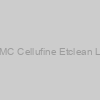 MC Cellufine Etclean L |
|
200-15 |
JNC America |
1 x 5 ml |
EUR 427.2 |
 MC Cellufine Etclean L |
|
200-51 |
JNC America |
5 x 1 ml |
EUR 427.2 |
) R-2A Agar (Agar Medium S) |
|
M962B-500G |
EWC Diagnostics |
1 unit |
EUR 44 |
|
Description: R-2A Agar (Agar Medium S) |
) R-2A Agar (Agar Medium S) |
|
ME962-2.5KG |
EWC Diagnostics |
1 unit |
EUR 214.73 |
|
Description: R-2A Agar (Agar Medium S) |
) R-2A Agar (Agar Medium S) |
|
ME962-500G |
EWC Diagnostics |
1 unit |
EUR 44.15 |
|
Description: R-2A Agar (Agar Medium S) |
) R-2A Agar (Agar Medium S) |
|
ME962-5KG |
EWC Diagnostics |
1 unit |
EUR 375.81 |
|
Description: R-2A Agar (Agar Medium S) |
 R 1610 Cells Complete Medium |
|
CM-0420-125mL4 |
Elabscience Biotech |
125 mL×4 |
EUR 98 |
|
Description: Complete Growth Medium |
 R 1610 Cells Complete Medium |
|
CM-0420 |
Elabscience Biotech |
125mL×4 |
EUR 98 |
|
|
|
Description: Cell lines complete growth medium |
) Insect Cell Medium: Grace?s Insect Medium (Unsupplemented) |
|
ABP-MED-10004 |
Allele Biotech |
1 liter |
Ask for price |
|
|
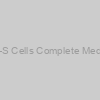 MH-S Cells Complete Medium |
|
CM-0597-125mL4 |
Elabscience Biotech |
125 mL×4 |
EUR 108 |
|
Description: Complete Growth Medium |
 MH-S Cells Complete Medium |
|
CM-0597 |
Elabscience Biotech |
125mL×4 |
EUR 108 |
|
|
|
Description: Cell lines complete growth medium |
 S-180 Cells Complete Medium |
|
CM-0201-125mL4 |
Elabscience Biotech |
125 mL×4 |
EUR 98 |
|
Description: Complete Growth Medium |
 S-180 Cells Complete Medium |
|
CM-0201 |
Elabscience Biotech |
125mL×4 |
EUR 98 |
|
|
|
Description: Cell lines complete growth medium |
 Wort Medium w/ Sterile Cellulose |
|
MF017F-20PT |
EWC Diagnostics |
1 unit |
EUR 37.6 |
|
Description: Wort Medium w/ Sterile Cellulose |
 Wort Medium w/ Sterile Cellulose |
|
MF017F-50PT |
EWC Diagnostics |
1 unit |
EUR 79.92 |
|
Description: Wort Medium w/ Sterile Cellulose |
 Motility Medium S Base |
|
M514-500G |
EWC Diagnostics |
1 unit |
EUR 38.38 |
|
Description: Motility Medium S Base |
 Grace S supplement medium for insect cells |
|
PM152012-500mL |
Elabscience Biotech |
500 mL |
EUR 55 |
|
Description: Classical Basic Medium |
) R-Mix Refeed Medium (ReadyCells) |
|
05-370100 |
Quidel |
100 mL |
Ask for price |
|
|
|
Description: use with R-Mix ReadyCells cultures (not for use with FreshCells cultures). |
 Teepol Medium w/ Sterile Cellulose |
|
MF015F-20PT |
EWC Diagnostics |
1 unit |
EUR 37.6 |
|
Description: Teepol Medium w/ Sterile Cellulose |
 Teepol Medium w/ Sterile Cellulose |
|
MF015F-50PT |
EWC Diagnostics |
1 unit |
EUR 79.92 |
|
Description: Teepol Medium w/ Sterile Cellulose |
 M-Endo Medium w/ Sterile Cellulose |
|
MF010F-50PT |
EWC Diagnostics |
1 unit |
EUR 81.46 |
|
Description: M-Endo Medium w/ Sterile Cellulose |
Lastly, limitations of current DEP platforms on biomedical utility are mentioned, wherein emphasis is given to the influence of different electrodynamic results reminiscent of electrophoresis (EP), electroosmosis (EO) and electrothermal (ET) results on DEP effectivity. This text goals to offer new concepts for the design of novel DEP micro-/nanoplatforms with fascinating excessive throughput towards utility within the biomedical group.
